Thai temples, known as wats (or vats in Laos) are very distinctive. The word wat means school, but is used only to refer to temple complexes. Wats are normally split into two sections. The Phutthawat is the part that we think of when we see the word temple. It is where all of the main religious buildings are contained. The Sanghawat is the living area for the Sangha (monks). This area houses all of the functional buildings such as the kuti (monks’ cells) and kitchens. Wats may vary in layout, but they will have all or most of the following structures. The Buddhist temples of Laos and Cambodia are very similar to the ones in Thailand.

Phra Ubosot (or Bot/Sim)
The Ubosot is the most important building in the temple. It is the ordination hall and it is where the primary Buddha image of the temple is normally housed. The Ubosot does not have physical contact with the other buildings and is clearly marked off by eight Bai Sema (marker stones named after their similarity to Bodhi leaves). Before an Ubosot is constructed, nine pits are dug in the ground; one under where the Buddha will be placed and eight where the sema stones will mark the cardinal directions. A ball shaped stone called a Luk Nimit is buried in each pit and the sema is placed on top. If the Ubosot has been rebuilt or is a royal temple there will be a double or triple sema stone in each of the directions. The Ubosot is where the ceremonies and rituals for the monks take place and is, therefore, the holiest part of the temple. You will notice that the entrance to the Ubosot will almost always face the east. Occasionally the ubosot is contained within a low wall called a Kamphaeng Kaew (crystal wall).
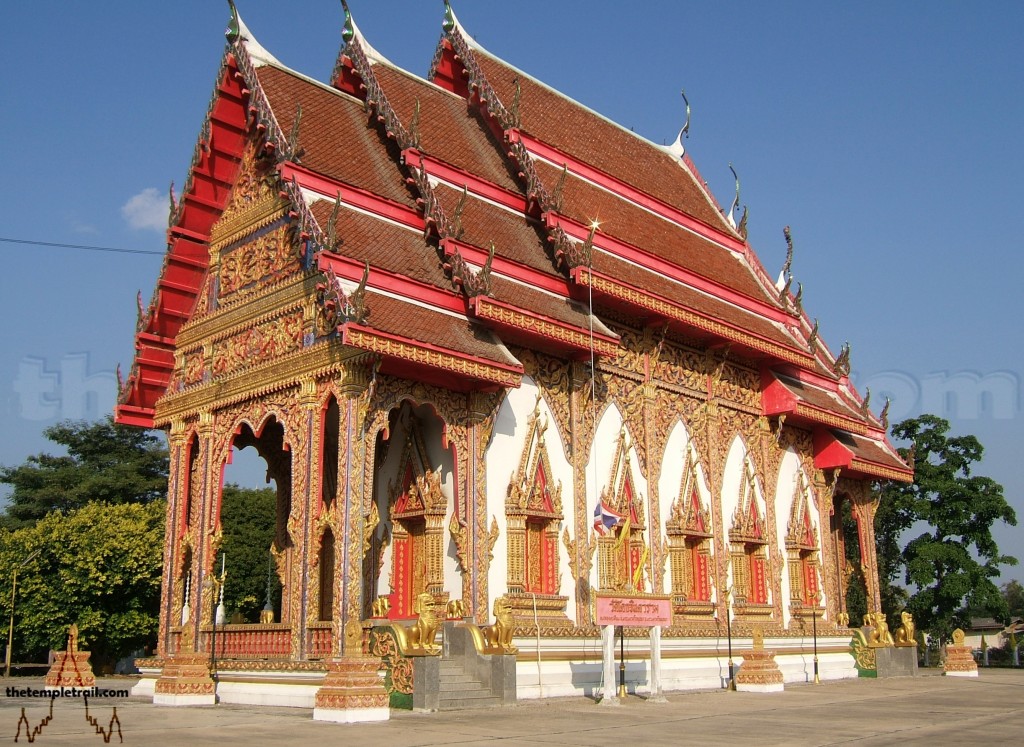
Wiharn (or Wihan/Vihara/Vihear)
The wiharn is a shrine hall. It normally houses a Buddha image (sometimes the principle image) and can be free-standing or physically connected to other buildings in the temple complex. Larger temples can have more than one wiharn (Wat Pho in Bangkok, for example, has nine) and there is no set number that temples stick to. The wiharn is where ceremonies for both monks and lay people are conducted.
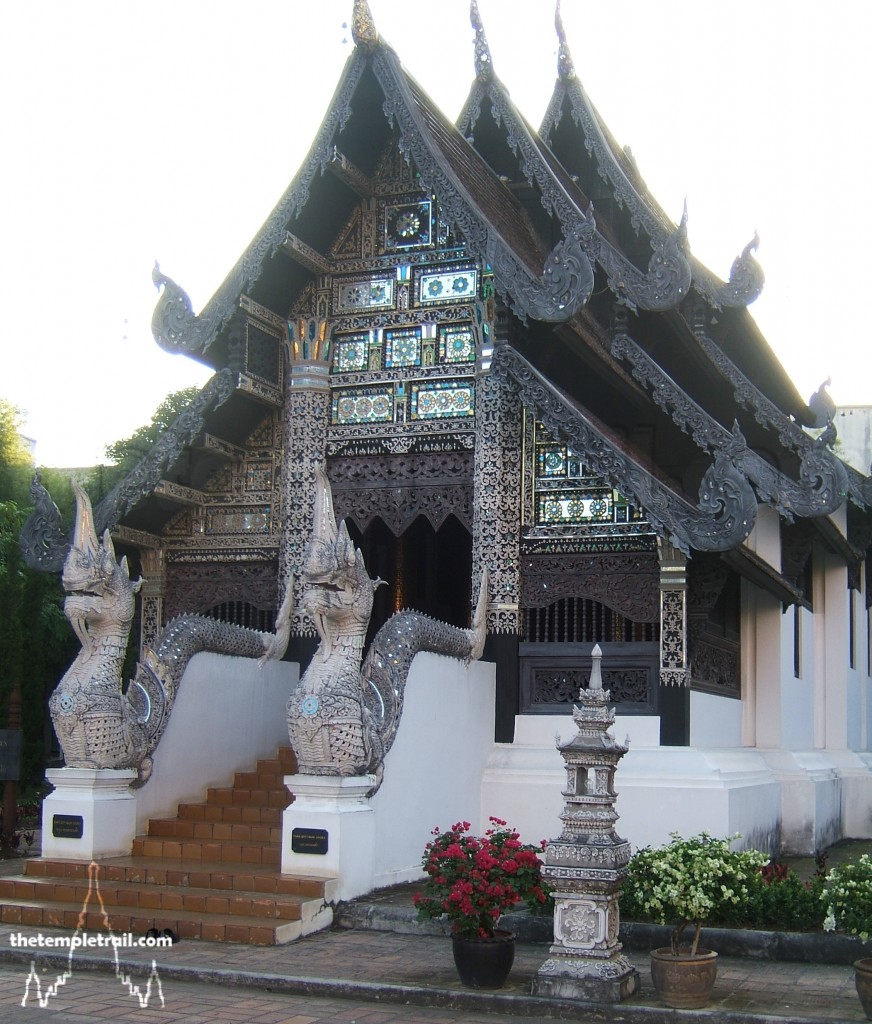
Chedi (Stupa)
The chedi is a monument that contains a relic or the cremated remains of a monk or member of the royal family. Chedis are very important points of worship. They vary in enormously and in Thailand you will see a huge range of differing styles. Chedis are normally constructed over a relic chamber or contain a relic in the actual chedi itself. They are traditionally made of laterite or brick and covered in stucco. Normally they are whitewashed or, more commonly, covered in gold. Every temple typically has at least one main chedi and any number of subordinate chedis.
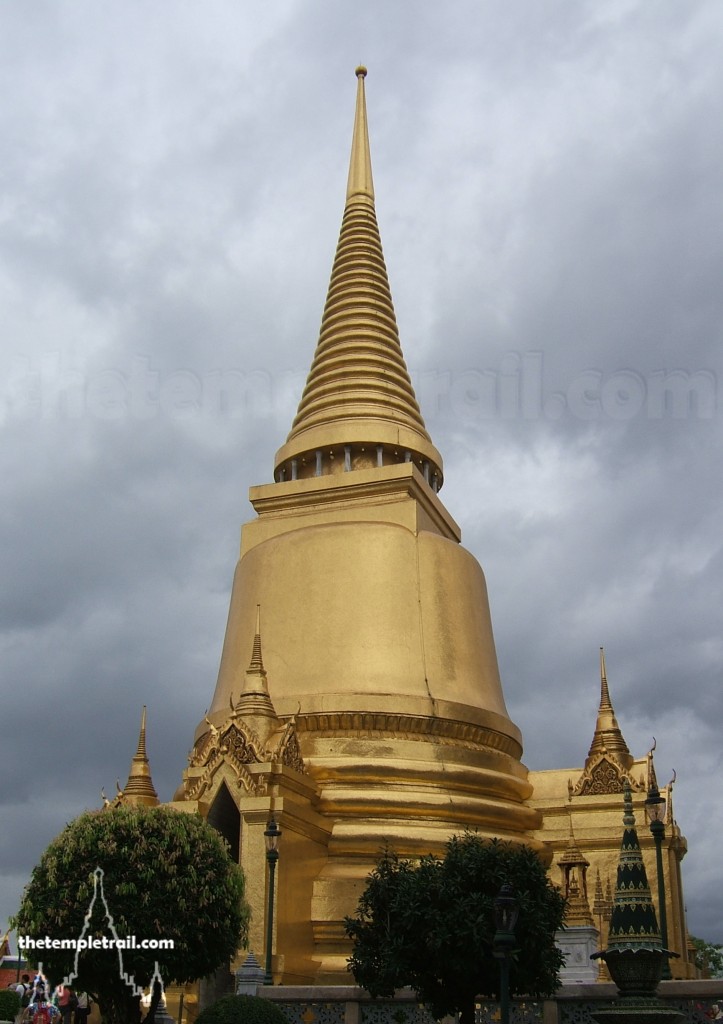
Prang
Prangs are corn-cob shaped Khmer-style towers that also function as stupas. They are a Thai adaptation of traditional Khmer towers that can be seen all over what was once the Angkorian Empire. They are often built over a pit containing a relic or the remains of an important person. They sometimes have chambers you can enter or can be closed off entirely. In their development from Khmer-Hindu to Thai-Buddhist the cella (inner chamber) evolved from a shrine room for the elite of society on the ground level to a small chamber accessed via the staircase (or in the case of many prangs, a niche containing a Buddha image). They also changed from a more pyramidal shape to a longer, rounder corn-cob shape. They are particularly prevalent in Sukhothai and Ayutthaya.
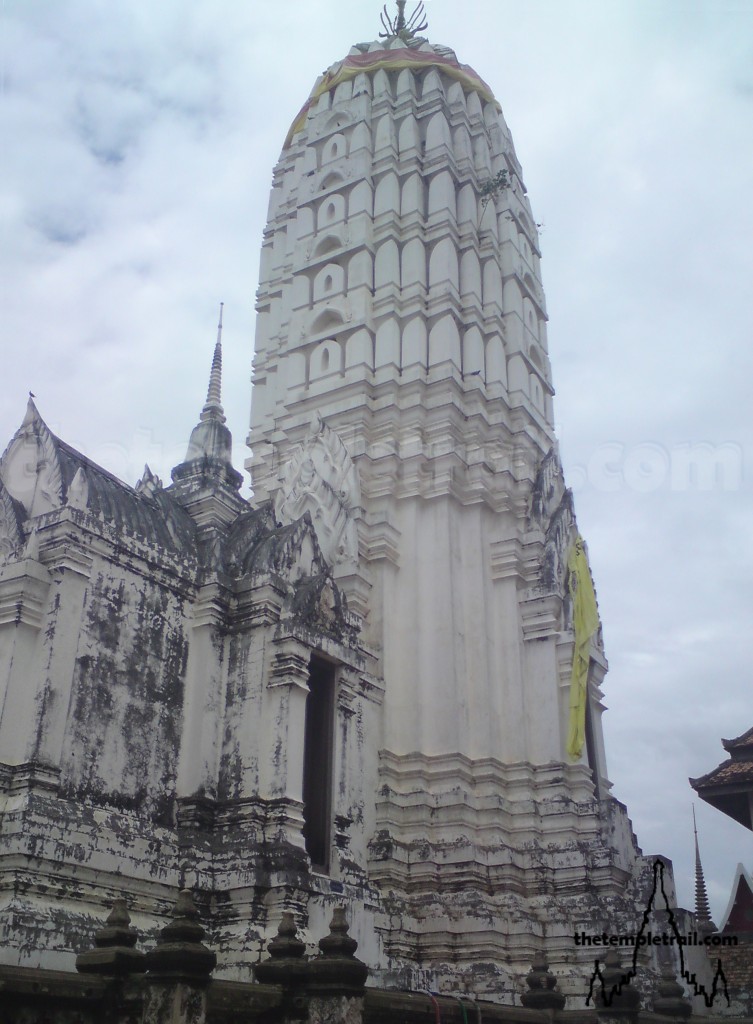
Mondop (or Mandapa)
The mondop is normally a square building that contains a shrine or performs some other important ritual function such as a scripture repository or reliquary. It is a building that came to Thailand from India via Cambodia. The Indian and Khmer mandapa is a pillared porch-like building for the main temple sanctuary. Thai mondops are stand-alone buildings that have developed to still have the pillars, but also to have enclosing walls. They normally have a spired roof and vary in looks and function from temple to temple.
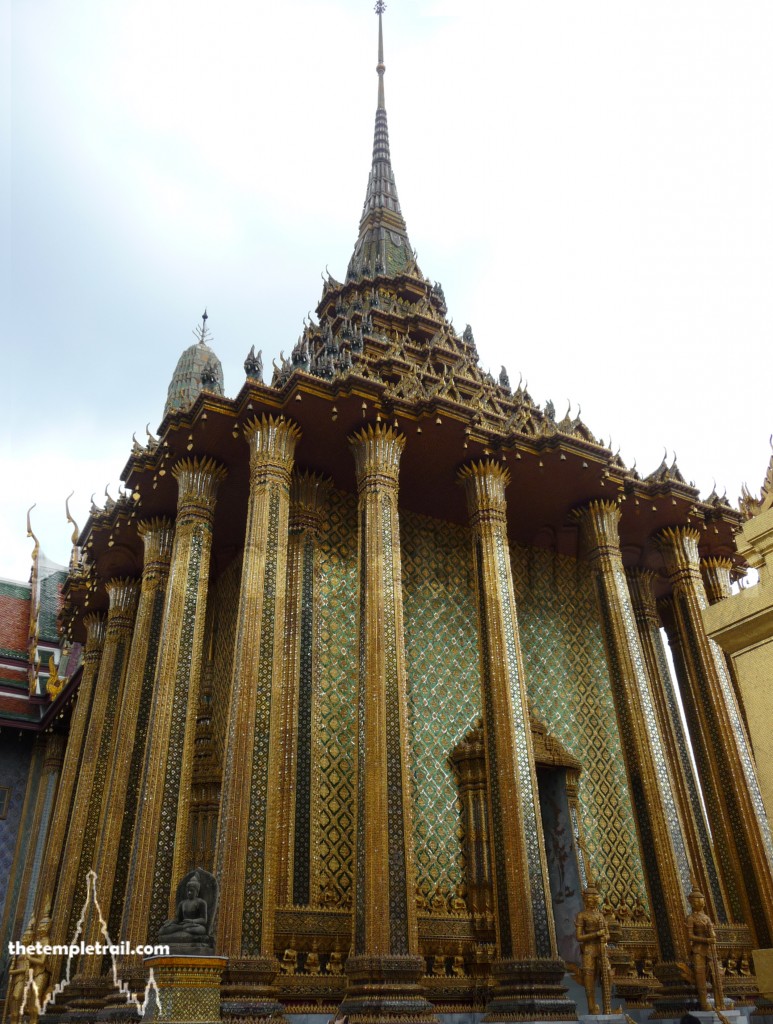
Hor Rakang
The hor rakang is the bell tower of the temple. It is used to signal the start of morning and evening prayer times and can be in any variety of shapes and styles.
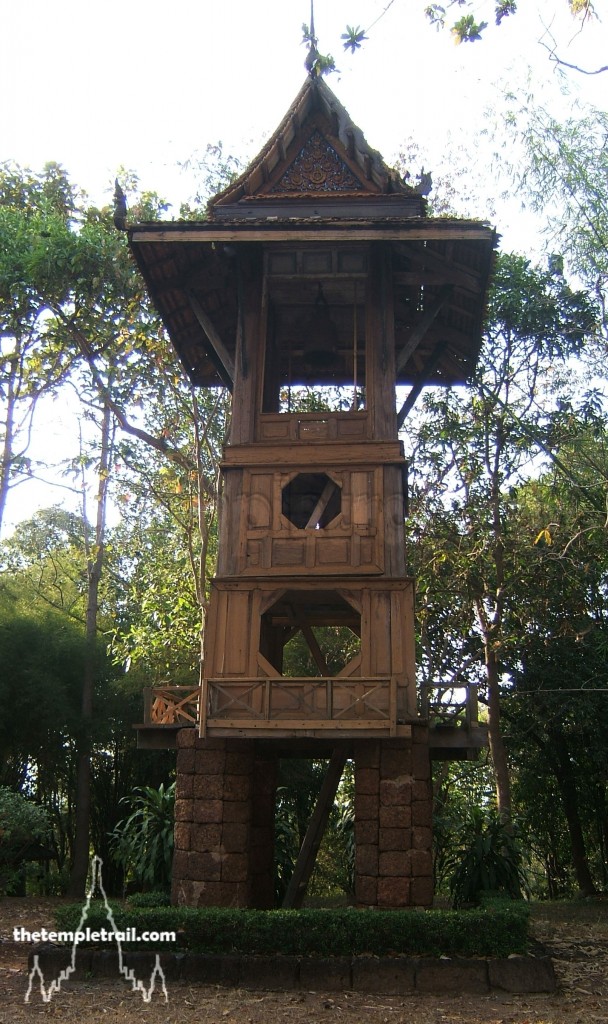
Ho Trai
The ho trai is the scripture library. The Tipitaka (scriptures), traditionally written on palm leaf, are prone to damage from humidity and termites. The structure, therefore, is usually raised on brick pillars, often over a pond in order to protect the scriptures from these two elements. The actual design of the building differs depending on the status and location of the temple.
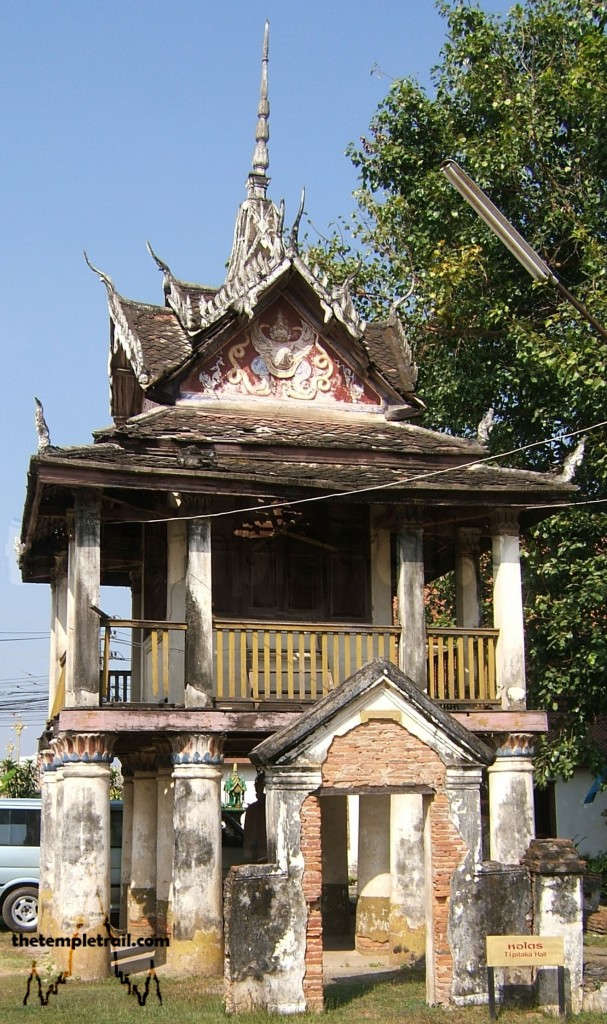
Sala
A sala is a shaded rest pavilion for anyone to sit under. Originally they were open for any travellers who needed to rest for the night. Salas can be found all over the country in and out of wats. They can be at the roadside or in town centres. A sala usually doesn’t have walls and a sala in temple grounds is normally called a salawat. Some wats have a large sala called a Sala Kan Prian. These places function as sermon pavilions for the monks to preach to the lay community or for monks to study for the Prian exam. They can be semi or fully enclosed and can be very large.

Some larger temples have a cloister around the inner sanctuary called a Phra Rabieng and many, especially in rural areas, have a school for the local children. Traditionally in Thailand, the monks were the educators of local children and it is only since the fairly modern advent of standardized schooling in Thailand, that the monks have mostly ceased to perform this duty. Temples often have cremation facilities and you can sometimes see a small building with a tall chimney on the grounds. This is the crematorium.
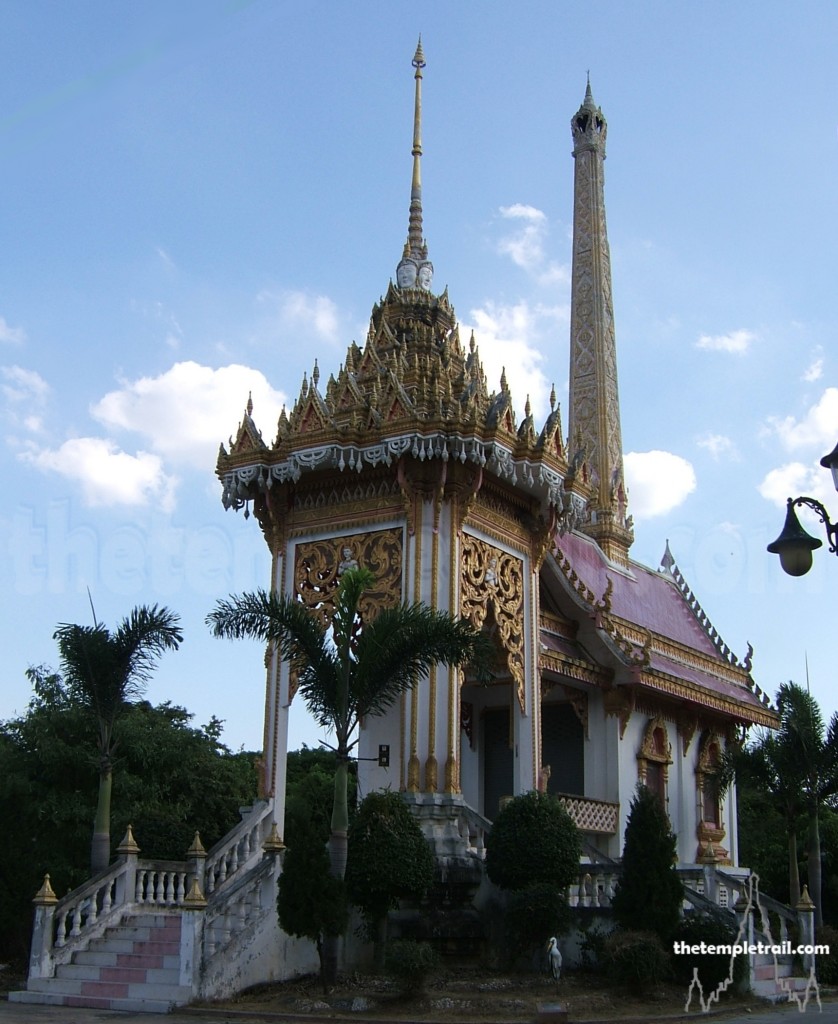
One of the most distinctive features of many of temple structures, such as the Ubosot or wiharn, is the two, three or four tiered roof in different coloured tiles. They have highly ornate gables and the lamyong (bargeboards) are in the shape of nagas with the bai raka (naga’s fin shape) or hang hong (head shape) finishing off the board at the end of the tiered roof section. At the top of each end of the roof is the chofa, a roof finial that represents Garuda’s beak.
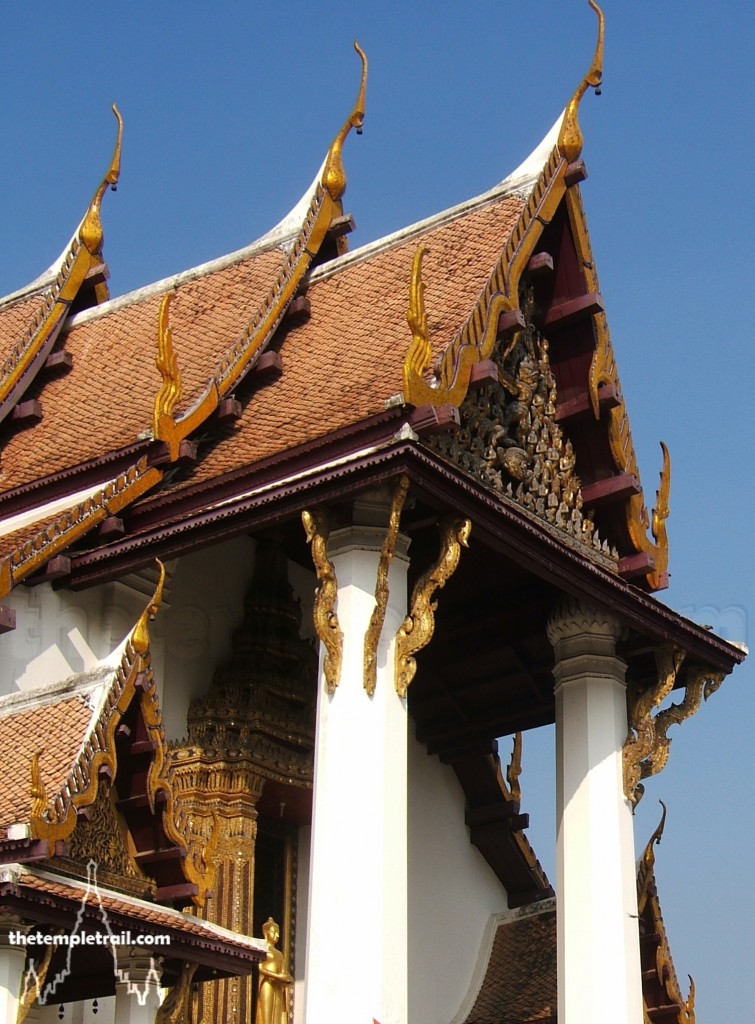
The temple will present you with all sorts of imagery other than Buddha images. There will be monkeys and demons, devas (gods) and asuras (titans/jealous gods), Hindu gods such as Brahma and Indra. Ganesha is popular and Kirthimukha (the swallowing monster representing greed ) is seen over many doorways. Apsaras (angels/temple dancers) and Himaphan animals (mythical creatures) are also found in the temple structures. Yakshas (ogres/earth spirits) or Singha (lions) guard the entrance of the temple and you will often see a statue of Rahu, the bodiless asura that eats the sun or the moon for the eclipses. The imagery is evidence of the huge impact that Brahmanism had on Thai Buddhism.
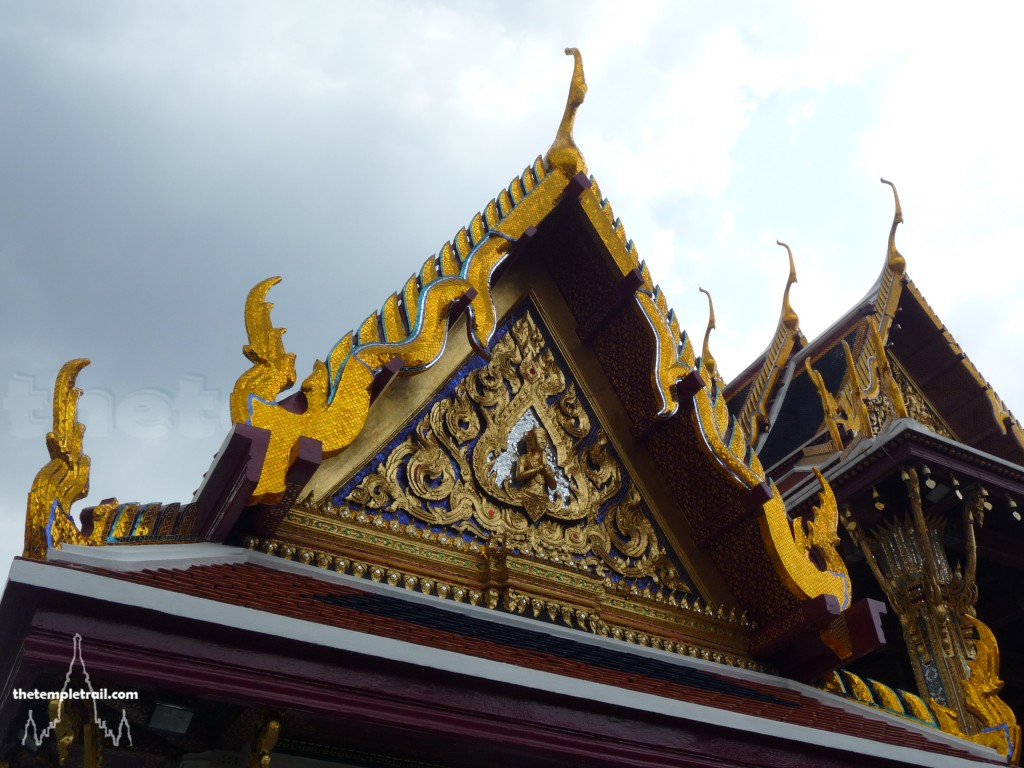
Even though they can be a sensual overload, wats are some of the most beautiful, intricate temple structures anywhere on earth. They are filled with rich imagery and deep symbolism. A visit will reward you with an experience that allows you to touch the roots of Thai culture and see where Thailand’s heritage is most apparent.
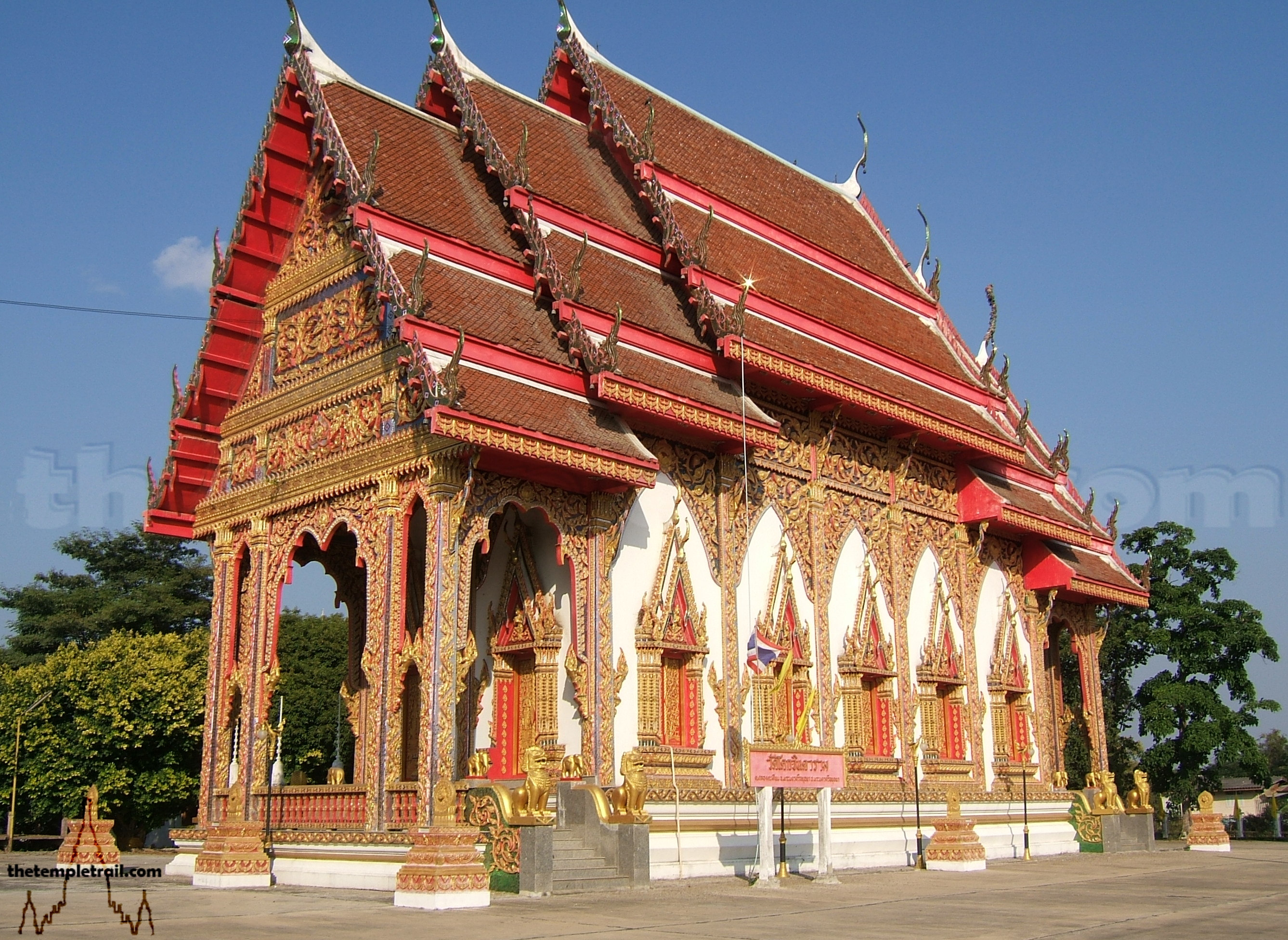
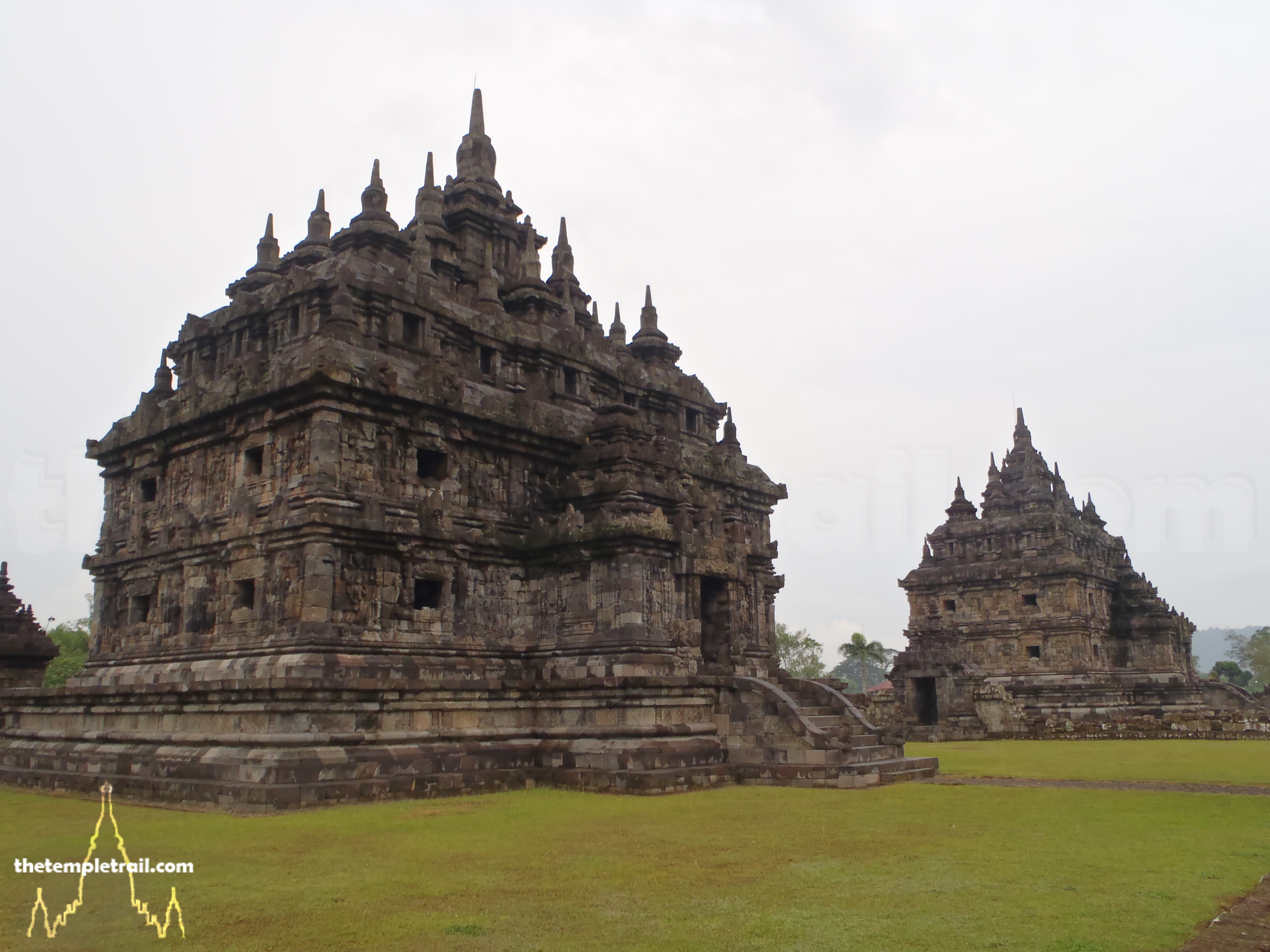 Candi Plaosan
Candi Plaosan
Heritage of Thailand is something to be preserved.